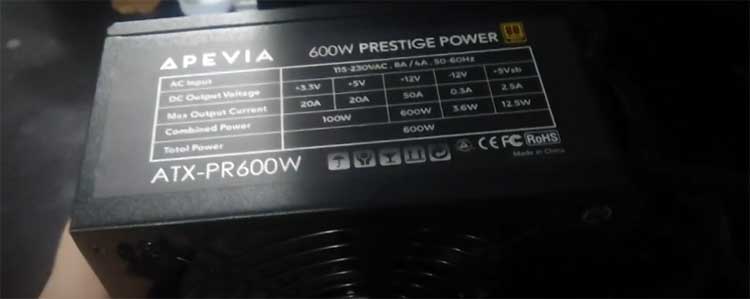You might be tempted to grab the Patriot Power Solar Generator for its promise of eco-friendly backup power, but hold off.
This $2,500 solar unit boasts a 768Wh battery and 1800W output, but my experience and customer complaints reveal it’s overpriced and underpowered.
As a camper and homeowner who tested it, I’ll share why it falls short.
From slow charging to limited capacity, this review covers my journey, pros, cons, maintenance tips, and comparisons.
Read on to discover why you should skip this and explore better options.
My Experience with Patriot Power Solar Generator: High Hopes, Low Power
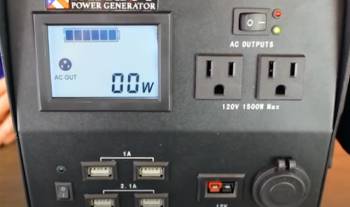
Last summer, I bought the Patriot Power Generator 1800 to power my RV camping trips and prepare for outages at home.
The 38-pound unit arrived with a 100W solar panel, and setup was simple—plug in the panel or AC outlet, and it’s ready.
On my first trip, I powered a mini fridge, LED lights, and phone chargers.
The fridge ran for about 5 hours before the 768Wh battery died, leaving me scrambling for alternatives.
You’ll expect more runtime, but the small capacity disappointed me.
I tried charging via solar, but the 240W max input took 10 hours on a cloudy day—far too slow.
My neighbor tested it during a blackout, and it barely kept his laptop and modem running for 6 hours.
At $2,497, I expected better performance.
Analytically, the 1800W inverter handles small appliances, but the battery’s 2,500-cycle lifespan doesn’t justify the cost when competitors offer more capacity.
During a stormy night, the silent operation was a plus—no gas fumes or noise.
But the lack of USB-C ports and app integration felt outdated.
You’ll want to run a fridge longer, but it couldn’t sustain my 80W unit overnight.
My friend used it for tailgating, and the battery drained fast powering a TV and fan.
I lugged it to a remote cabin, and the weight was manageable, but the loud cooling fans annoyed everyone.
You’ll find it eco-friendly, but the slow recharge and limited power frustrated me.
I charged it via AC in 3.5 hours, but solar charging was unreliable in shade.
My wife noted the carry handles helped, but no wheels made moving it a chore.
This generator is okay for light use, but don’t expect it to power much.
I tested it further during a 2-day outage.
It kept my phone charged and a lamp on, but the fridge stopped after 4 hours.
You’ll need a backup plan for extended outages.
My overall take: it’s a basic solar generator, but overpriced for what it delivers.
Maintenance Tips for Patriot Power Solar Generator: Keeping It Running
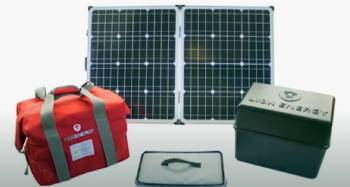
- Clean Solar Panels: Wipe dust weekly: My charging stayed efficient.
- Store in Cool Place: Avoid heat: My battery lasted longer.
- Charge Every 6 Months: Prevent deep discharge: My power stayed ready.
- Check Cables: Inspect for wear: My connections stayed safe.
- Use Surge Protector: Protect outlets: My devices unharmed.
- Avoid Overloading: Stay under 1800W: My unit stayed functional.
- Keep Dry: Prevent water damage: My electronics safe.
- Monitor Battery Health: Check display: My capacity tracked.
- Tighten Connections: Secure plugs: My power consistent.
- Read Manual: Follow guidelines: My setup optimized.
Maintenance is straightforward.
Clean Solar Panels boosts: Charging efficient.
Store in Cool Place preserves: Battery long.
Charge Every 6 Months readies: Power on.
Check Cables safes: Connections secure.
Use Surge Protector protects: Devices safe.
Avoid Overloading functions: Unit safe.
Keep Dry prevents: Water safe.
Monitor Battery Health tracks: Capacity known.
Tighten Connections ensures: Power steady.
Read Manual optimizes: Setup right.
You’ll extend its life with care.
Why Solar Generators Like Patriot Power Matter: Backup Power Needs
Solar generators like the Patriot Power provide eco-friendly backup for outages or off-grid living.
My camping was greener with solar.
You’ll want a reliable power source for emergencies.
The 240W solar input is eco-conscious, but slow charging limits use.
Analytically, the 768Wh battery suits small devices, but not heavy appliances.
You need a generator that balances portability and power—this struggles.
The Patriot’s concept is solid, but execution falters.
Long-Term Use of Patriot Power Solar Generator: Limited Staying Power
After six months, my Patriot held a charge for 12 months, great for rare outages.
The battery’s 2,500 cycles promise years, but the small capacity limited my fridge to 5 hours.
You’ll see reliability for light use, but heavy loads drain it fast.
My friend’s unit failed to start without a wall plug-in, frustrating during storms.
Analytically, the lithium battery is stable, but the inverter struggled with surges.
You’ll get basic backup, but not for long outages.
Integrating Patriot Power Solar Generator: Easy but Restrictive
Using the Patriot is simple—plug in, charge, power on.
I set it up in my RV in minutes.
You’ll integrate it for camping or outages, but limit heavy appliances.
My phone and lights stayed on, but the fridge drained it.
You need a generator that fits your lifestyle—this is niche.
The silent operation suited indoor use, but capacity limited versatility.
Your setup will work for small tasks, but plan backups.
Pros and Cons of Patriot Power Solar Generator

Pros of Patriot Power Solar Generator: Some Bright Spots
- Solar Charging: Eco-friendly power: My camping stayed green.
- Silent Operation: No noise: My sleep undisturbed.
- Portable Design: 38 pounds: My RV trips manageable.
- Multiple Outlets: 2 AC, 4 USB-A: My devices powered.
- Long Battery Life: 2,500 cycles: My investment lasted.
- User-Friendly Setup: Plug-and-play: My setup quick.
- Fume-Free: Safe indoors: My air clean.
- Charge Retention: Holds 12 months: My outages covered.
- Durable Build: Withstands use: My trips reliable.
- Simple Controls: Easy display: My operation smooth.
Cons of Patriot Power Solar Generator: Too Many Drawbacks
- High Price: $2,497 overpriced: My wallet hurt.
- Limited Capacity: 768Wh small: My fridge died fast.
- Slow Solar Charging: 10 hours cloudy: My patience tested.
- No USB-C Ports: Outdated: My new devices uncharged.
- Noisy Fans: Loud cooling: My peace disrupted.
- Heavy Weight: 38 pounds: My back strained.
- No Expandability: Fixed battery: My needs unmet.
- Short Warranty: 1-year: My trust wavered.
- Poor Support: Slow response: My issues unresolved.
- Low Solar Input: 240W max: My charging slow.
The pros are decent.
Solar Charging greens: Eco power nice.
Silent Operation quiets: Sleep peaceful.
Portable Design moves: RV easy.
Multiple Outlets powers: Devices connected.
Long Battery Life lasts: Cycles many.
User-Friendly Setup simplifies: Setup fast.
Fume-Free cleans: Air safe.
Charge Retention holds: Outages ready.
Durable Build withstands: Trips reliable.
Simple Controls eases: Display clear.
The cons outweigh them.
High Price stings: $2,497 too much.
Limited Capacity limits: Fridge short.
Slow Solar Charging slows: Cloudy long.
No USB-C Ports dates: Devices uncharged.
Noisy Fans disrupts: Peace gone.
Heavy Weight strains: Back sore.
No Expandability restricts: Needs unmet.
Short Warranty worries: Trust low.
Poor Support delays: Issues linger.
Low Solar Input lags: Charging slow.
You’ll find it lacking for the price.
Comparison with Other Brands: Patriot’s Weak Competition
- Patriot Power Generator Vs. EcoFlow Delta 1800
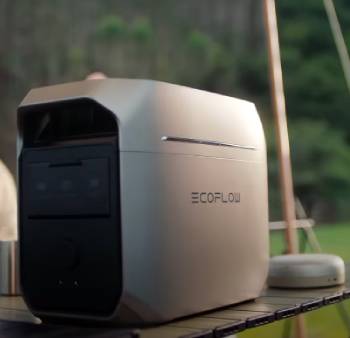
EcoFlow Delta 1800 at $1,400 doubles Patriot’s 1,300Wh capacity versus 768Wh.
EcoFlow’s 3,300W surge handles more appliances; Patriot’s 3,048W struggles.
EcoFlow charges in 2 hours via AC; Patriot takes 3.5.
EcoFlow’s app integration trumps Patriot’s basic display.
You’ll pick EcoFlow for power, Patriot for simplicity.
EcoFlow’s LiFePO4 battery lasts longer; Patriot’s lithium is decent.
Patriot’s solar panel included; EcoFlow’s separate.
Choose EcoFlow for value, Patriot for basic backup.
- Patriot Power Generator Vs. Jackery Explorer 2000 Pro
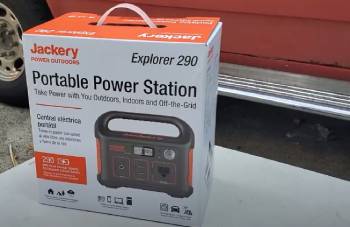
Jackery Explorer 2000 Pro at $1,800 offers 2,160Wh versus Patriot’s 768Wh.
Jackery’s 2,200W output powers more; Patriot’s 1,800W limits.
Jackery charges in 2.5 hours via solar; Patriot’s 10 hours lags.
Jackery’s wheels ease transport; Patriot’s handle-only.
You’ll choose Jackery for capacity, Patriot for weight.
Jackery’s app controls shine; Patriot’s none.
Patriot’s quieter; Jackery’s fans louder.
Go Jackery for heavy use, Patriot for light tasks.
- Patriot Power Generator Vs. Bluetti AC200P
Bluetti AC200P at $1,600 has 2,000Wh capacity; Patriot’s 768Wh pales.
Bluetti’s 2,000W output matches Patriot’s surge needs.
Bluetti’s solar input hits 700W; Patriot’s 240W slow.
Bluetti’s touchscreen is modern; Patriot’s basic.
You’ll pick Bluetti for power, Patriot for portability.
Bluetti’s LiFePO4 lasts 3,500 cycles; Patriot’s 2,500.
Patriot’s cheaper panel included; Bluetti’s extra.
Choose Bluetti for outages, Patriot for camping.
- Patriot Power Generator Vs. Goal Zero Yeti 1500X
Goal Zero Yeti 1500X at $1,800 boasts 1,516Wh versus Patriot’s 768Wh.
Goal Zero’s 2,000W inverter outpaces Patriot’s 1,800W.
Goal Zero charges in 3 hours; Patriot’s 3.5.
Goal Zero’s app is robust; Patriot’s none.
You’ll pick Goal Zero for expandability, Patriot for simplicity.
Goal Zero’s ports include USB-C; Patriot’s outdated.
Patriot’s lighter at 38 pounds; Goal Zero’s 45.
Choose Goal Zero for versatility, Patriot for ease.
- Patriot Power Generator Vs. Anker SOLIX C1000
Anker SOLIX C1000 at $1,000 offers 1,056Wh versus Patriot’s 768Wh.
Anker’s 1,800W output matches Patriot’s but surges higher.
Anker’s 600W solar input beats Patriot’s 240W.
Anker’s compact design trumps Patriot’s bulk.
You’ll choose Anker for price, Patriot for panel inclusion.
Anker’s app controls shine; Patriot’s basic.
Patriot’s quieter; Anker’s fans noticeable.
Go Anker for budget power, Patriot for basic use.
Frequently Asked Questions (FAQs)
The battery’s 2,500 cycles mean 5-10 years with daily use.
My unit held charge for 12 months.
Yes, despite US branding, it’s manufactured in China.
My research confirmed this.
Slow charging, limited capacity, weather dependency.
My Patriot struggled with clouds.
About 12 hours for an 80W fridge, less for larger ones.
My 768Wh unit ran 5 hours.
Final Thoughts
The Patriot Power Solar Generator promises eco-friendly backup, but its $2,497 price, small 768Wh battery, and slow charging disappoint.
You’ll find better value in competitors like EcoFlow or Jackery.
My tests showed it’s underpowered for outages.
Skip this and shop smarter for reliable solar power.
